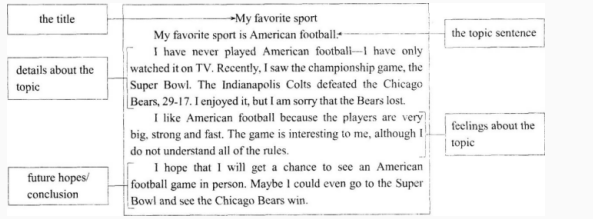二、 簡答題(本大題共1小題,共20分)
根據題目要求完成下列任務,用中文作答。
31. 課堂互動(classroom interaction)是重要的教學活動形式。請列出課堂互動中人際互動的四種形式(8分),簡述其中兩種形式的使用場景并分析其利弊。(12分)
(1)課堂教學中的人際互動。是指課堂教學中發生于參與教學活動各人員之間的相互影響與交互作用。按照不同的分類標準,可以分出不同的互動類型。從互動主體來劃分.可以分為教師和學生兩個方面。教師方面主要以個體呈現.學生方面可以以多個個體、若干學習小組、一個群體呈現。對這四種主體兩兩組合,就可以區分出多種互動類型:教師與學生個體、教師與學生小組、教師與全體學生、學生個體與個體、學生個體與小組、學生個體與全體、學生小組與小組、學生小組與全體。(列出其中四種即可)
(2)①教師與學生全體之間的互動
使用情景:教師在教學導人、講授重點知識技能、課堂提問、教學評價、課堂練習等環節多使用此種類型。利:此時教師面向全體學生.充分控制著課堂交往的主動性。學生可以在單位時間內獲得大量的信息,并以群體的形式向教師進行反饋。弊:互動針對性較差。容易忽略某些學生的問題。
②學生個體與學生全體之間的互動
使用情景:教師提出問題或要求,學生個體在全班學生面前進行示范、表演或發表觀點時其他學生與之呼應所發生的互動。利:這種互動類型由于緣起時互動對象無明確指向以及互動主題的不確定,因此所有學生均處在積極思考狀態.最易激起思維的火花,是一種學生個體資源群體分享的過程。弊:課堂秩序可能因此變得混亂.課堂節奏容易失控。
三、教學情境分析題
32.下面是對王老師課堂教學行為的聽課記錄。
·教讀單詞和課文:
·糾正學生的讀音、拼寫、句法等錯誤;
·講解知識點:
·管理課堂紀律:
·安排學生活動:
·給學生布置作業:
·解答學生疑問:
·檢查和評講作業。
請根據聽課記錄回答下列問題:
(1)王老師的課堂角色有哪些?(15分)
(2)王老師的角色定位存在什么問題(5分)?深層原因是什么?(5分)
(3)英語教師應該如何定位自己的課堂角色?(5分)
(1)“教讀單詞和課文.講解知識點”體現了王老師扮演的課堂角色是知識的傳授者。
“糾正學生的讀音、拼寫、句法等錯誤,檢查和評講作業”體現了王老師扮演的課堂角色是評價者。“管理課堂紀律”體現了王老師扮演的課堂角色是課堂活動管理者。
“安排學生活動.給學生布置作業”體現了王老師扮演的課堂角色是課堂活動的組織者。“解答學生疑問”體現了王老師扮演的課堂角色是資源的提供者。
(2)王老師的角色定位存在的問題:王老師在整個教學過程中只是一味地講授和糾錯,整個課堂都是以老師為中心.很少有以學生為主體的活動,錯誤地定位了教師的課堂角色。新課標要求教師不僅是知識的傳輸者,更應該是學生學習的促進者。包括教師為學生創造積極的學習環境.運用多種策略激發學生的學習動機,引導學生制定和評價學習計劃.培養學生的學習策略等。總之,教師的角色是多元化的,并隨著社會的發展不斷發生變化。深層原因:王老師對于新課程標準的理念理解不到位,沒有真正認識到“以教師為主導,以學生為主體”的教學要求,沒有轉變教育教學觀念,做到與時俱進,沒有及時地提高自己的專業素養,不斷地在教中去學,教學相長。
(3)英語教師定位課堂角色應在新課程理念的指導下,根據“教師為主導,學生為主體”的教學原則,轉變自己在教學中的角色,不應僅僅是知識的傳授者,還應成為學生學習的促進者、指導者、組織者、幫助者、參與者和合作者。教學的過程是教師與學生交流的互動課程,教師需要根據課程的目標、學習活動的要求、學習過程的需要以及學生的需要扮演不同的角色。教師要有意識地引導學生發展自主學習能力,使學生真正成為學習的主體。
四、教學設計題(本大題1小題,40分)
根據提供的信息和語言素材設計教學方案,用英文作答。
33.設計任務:請閱讀下面學生信息和語言素材.設計一個20分鐘的英語寫前準備活動。
教案沒有固定格式.但須包含下列要點:
· teaching objectives
· teaching contents
· key and difficult points
· major steps and time allocation
· activities and justifications
教學時間:20分鐘
學生概況:某城鎮普通中學高中二年級第一學期學生,班級人數40人。多數學生已經達到
《普通高中英語課程標準(實驗)》六級水平。學生課堂參與積極性一般。
語言素材:
A personal essay is a short piece of writing that tells about a personal experience or something about a person' s life.
Here is an example of a personal essay.

You can write about nearly any personal topic using a format like this. The student's essay in the Reading also used this same plan.
【參考設計】
Teaching Contents: Write a personal essay according to the example given.
Teaching Objectives:
(1) Knowledge objective
Students will have a clear mind about what a personal essay is and know how to write a personal essay.
(2) Ability objective
Students can develop the ability to analyze the structure of the passage and master the skills of writing a personal essay.
(3) Emotional objective
Students can understand life experience better and can be more confident to talk about their personal things with others.
Teaching Key and Difficult Points:
(1) Teaching key point
Enable students to write a personal essay.
(2) Teaching difficult point
Let the students know how to write a personal essay.
Major Steps:
Step 1 Warming up and lead-in (3 minutes)
Ask students to tell about something unforgettable about their life experiences, such as a trip, a party, a date, an embarrassing experience.
(Justification: To raise the topic and make them get familiar with what they're going to talk about today.)
Step 2 Brainstorming (3 minutes)
Ask students to list the things that jump into their minds related to their personal experience.
(Justification: It helps students to have many topics to choose in their writing. )
Step 3 Sample reading and discussion (5 minutes)
Give Students the example "My favorite sport" and ask them to read it. Then divide them into groups and make them have a discussion about the format of the passage. Then make a summary on it.
Para.1 the topic sentence
Para.2 details about the topic
Para.3 feelings about the topic
Para.4 future hopes/conclusion
(Justification: The sample reading can help students have a basic understanding of the contents of a personal essay and enable the Ss to know how to write this kind of essay. Through discussion, students' thoughts can be inspired by each others' sparkling points.)
Step 4 Mapping (5 minutes)
Ask students to select the useful information from the brainstorming and organize these ideas.
(Justification: Mapping is a useful way for students to organize contents in writing, which helps the students to write their essay more easily.)
Step 5 Outlining (4 minutes)
Ask the students to make an outline of their personal essay and pay attention to the format when writing.
(Justification: The outlining can help students illustrate the main organizing structure and the most important points of the essay and make a preparation for the drafting.)




